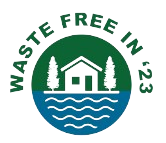(Pulka et al., 2020) – Read Full Paper Here
Sewage sludge is a byproduct of wastewater treatment that contains valuable nutrients like nitrogen and phosphorus. However, it also has high moisture content and contaminants, making disposal a challenge. One way to make better use of it is torrefaction, a process that heats the sludge to high temperatures (200–300°C) without oxygen. This study explored whether torrefied sewage sludge (TSS) is better used as a fuel or as a fertilizer.
Key Findings
The researchers tested sewage sludge at different torrefaction temperatures and times. They found that:
- TSS does not work well as fuel. The high ash content lowers its energy value, making it inefficient compared to other biomass fuels.
- TSS is a good fertilizer. It retains essential nutrients like nitrogen (N) and phosphorus (P), which are beneficial for plant growth.
- Soil improvement potential. TSS meets Poland’s fertilizer quality standards, meaning it can be safely used in agriculture.
- Better waste management. Using TSS as fertilizer reduces landfill waste and lowers environmental pollution.
Economic and Environmental Benefits
- Sustainable Waste Recycling: Instead of dumping sewage sludge, turning it into fertilizer recycles valuable nutrients, reducing dependence on chemical fertilizers.
- Lower Waste Disposal Costs: Many wastewater plants struggle with sludge disposal. Using it in agriculture saves landfill space and reduces treatment costs.
- Reduced Pollution: Proper sludge management prevents water pollution and reduces greenhouse gas emissions from landfill decomposition.
- Healthier Soil: TSS improves soil quality by adding organic matter and nutrients, supporting better crop yields.
Conclusion
Torrefied sewage sludge is not ideal as fuel due to its high ash content, but it is a great fertilizer for improving soil health and reducing waste pollution. By using TSS in agriculture, we can turn waste into a valuable resource, benefiting both the environment and the economy.
Got questions?
